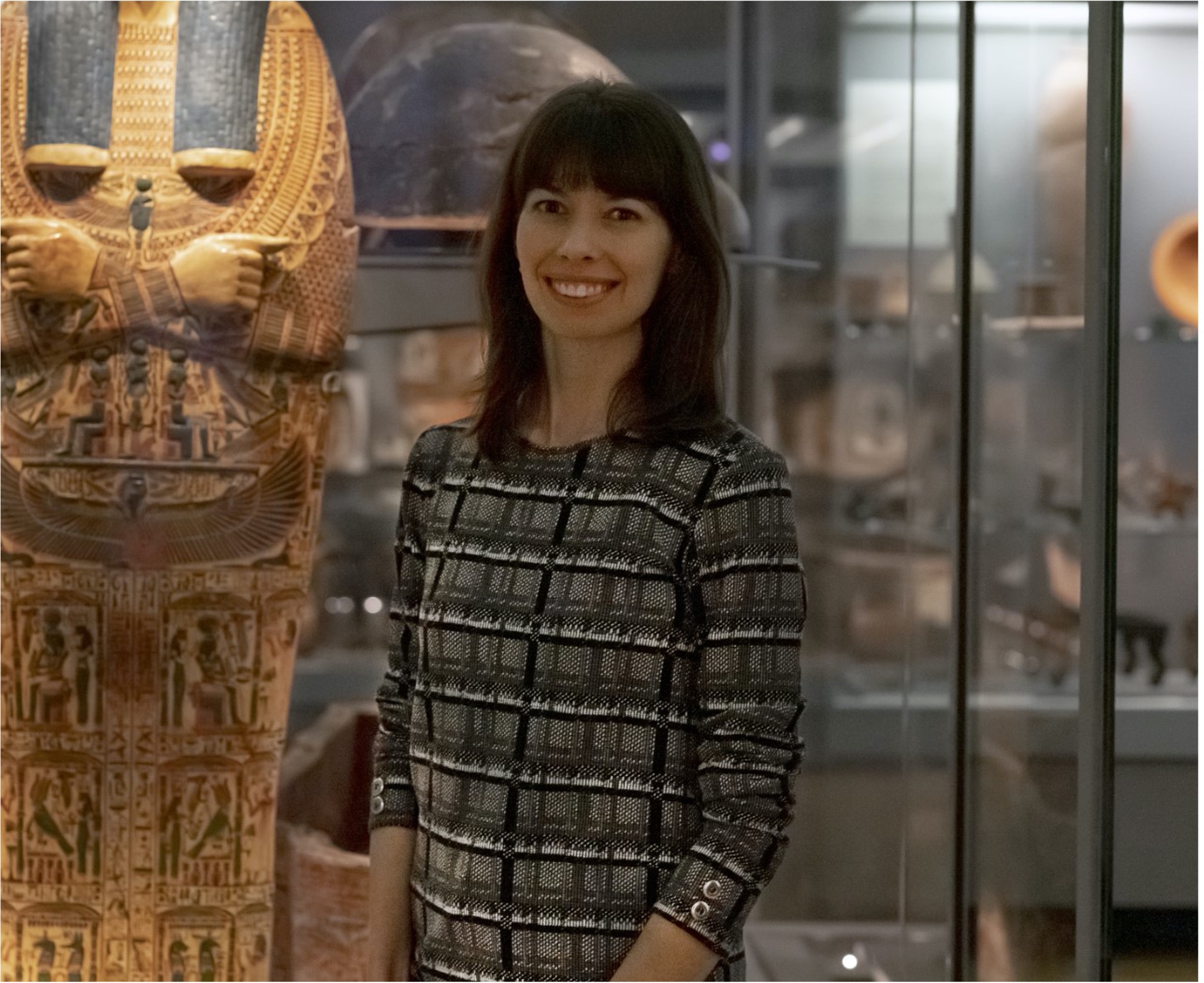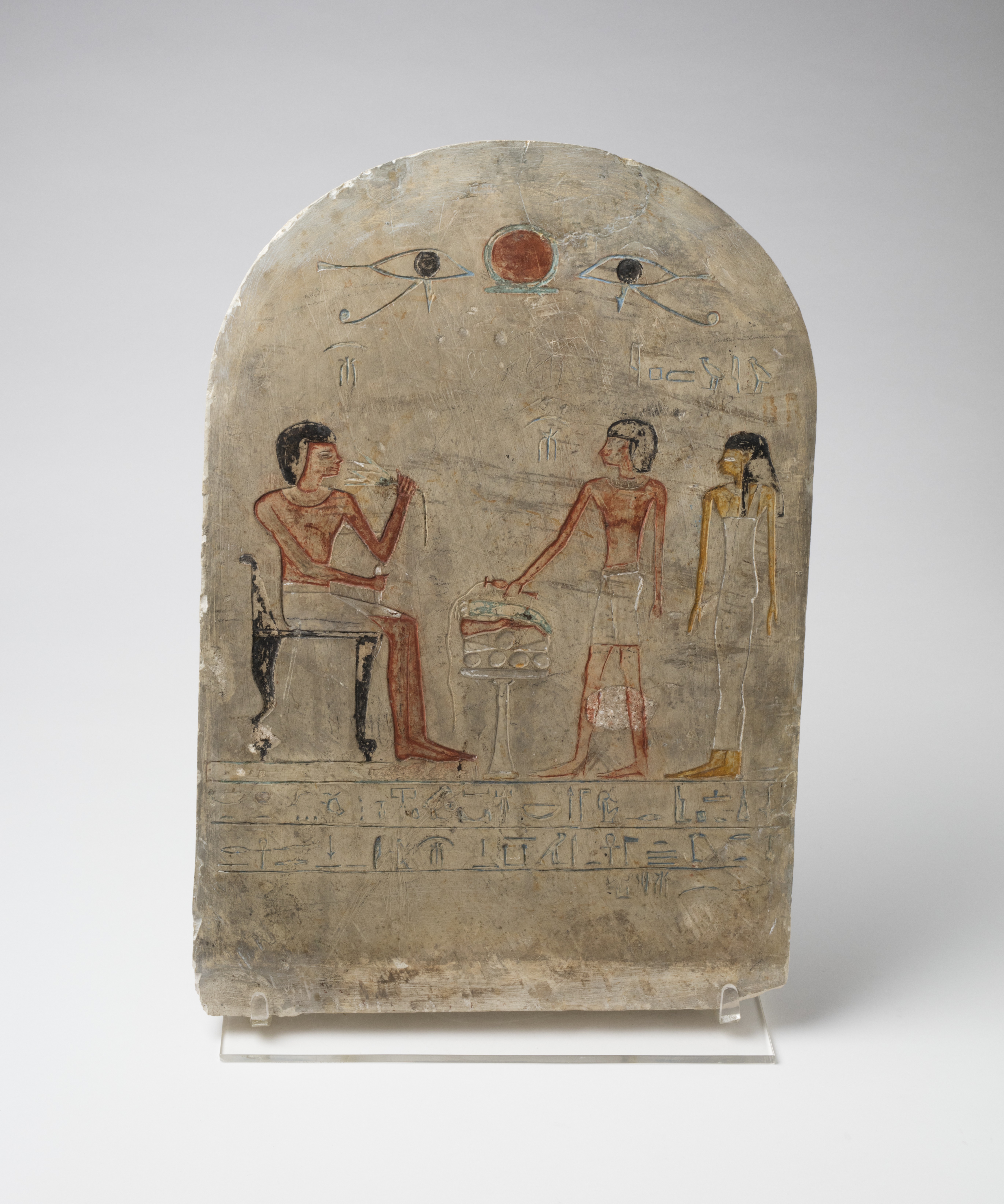2022 CACHE Postdoctoral Research Fellow: Dr Melanie Pitkin

CACHE welcomes Dr Melanie Pitkin as our 2022 Postdoctoral Research Fellow.
Melanie is an Australian based Early Career Researcher with a PhD in Egyptology (awarded by Macquarie University in 2018). She has a strong research track record, particularly during her 4-year Postdoctoral position in Egyptian Antiquities at the Fitzwilliam Museum, Cambridge. Melanie worked on the Fitzwilliam Egyptian coffins project and is a specialist in the First Intermediate Period and the study of ancient Egyptian stelae. Melanie also has many years of experience working as a museum curator in Australia and the UK, and providing support to museums in Egypt. She is currently Senior Curator (Nicholson Collection) at the Chau Chak Wing Museum, University of Sydney.
Dr Pitkin’s 2022 CACHE Research Fellowship project, titled Egyptian stelae in the Chau Chak Wing Museum: an interdisciplinary examination of their materiality, production and decoration, will provide new insights into the way we understand, and think of, ancient Egyptian stelae. In Egyptology, stelae have traditionally been examined for their text and decoration. Very little attention has ever been given to the industry of their production, despite the fact that this approach can provide new insights into the ways craftsmen worked (including how they were organised, the different techniques they employed, and the conditions in which they worked), where the stone was quarried (thus possibly helping to pinpoint an original provenience for the object when other indicators may be lacking), as well as evidence for the stelae having been modified and/or reused (opening up many new sub-strands of research). By focusing on a group of seven identified Egyptian New Kingdom limestone stelae in the Chau Chak Wing Museum, working together with a team of specialists led by Melanie with the support of CACHE Executive Member Professor Damian Gore (School of Natural Sciences, Faculty of Science and Engineering, Macquarie University), the project will (1) establish the lithological and geochemical properties of the stelae; (2) compare the lithological and, if possible, geochemical descriptions of the stelae geomaterials with appropriate samples from the Klemm & Klemm stone quarry sample collection held at the British Museum to see if it is possible to identify the quarry site/region from where the stone originates; (3) identify the different types of pigments used and their presence and distribution on the stelae; (4) determine the method of carving the stelae, including the types of tools, the possible order of carving and any signs of modifications, graffiti and reuse; and(5) place the above in the context of the text, iconography and ownership history in order to form a holistic understanding of the stelae under study.

A strong component of the project will also involve sharing these results with different audiences, often in creative ways, including a ‘Pop-Up’ Museum with migrant community groups in western and south-western Sydney.
CACHE is delighted to be supporting Melanie’s work which will increase our knowledge of the production and use of limestone stelae, now curated by the Chau Chak Wing Museum. For more information about her research and publications, see her USYD researcher profile, LinkedIn and Twitter.
Image 1 (top): Dr Melanie Pitkin. Photography by Amy Judd. Image used with permission.
Image 2 (bottom) Limestone stela of Ahmose, probably from Thebes, New Kingdom (Dynasty 18), Egypt. Accession No. NMR.53, Nicholson Collection, Chau Chak Wing Museum, Sydney. Image used with permission.
